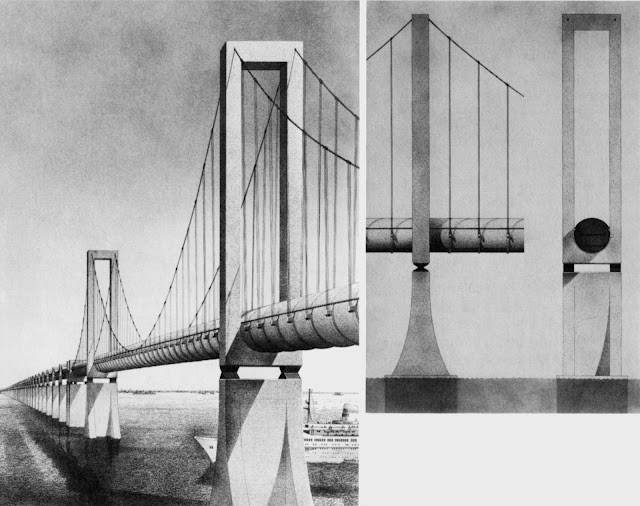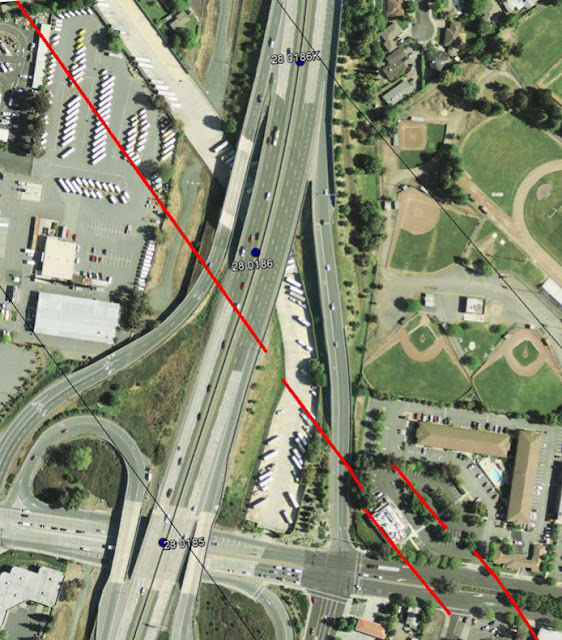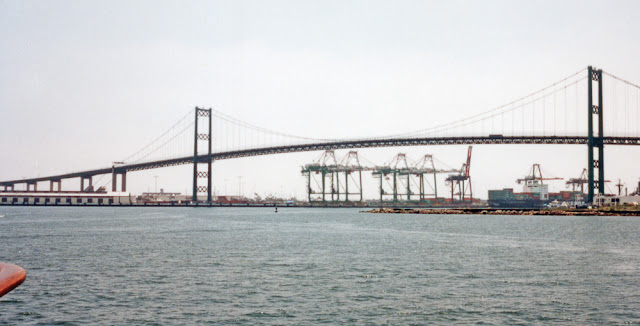 |
| August 2015 (39.54987 Degrees, -121.42988 Degrees) Lake Oroville Bridge |
Chico State University has archived many photos that were taken during construction of the bridge and the dam. It's surprising how many long span bridges were designed and built during the period when the dams were being constructed. Sepulveda Dam was completed by the USACE in 1941, Shasta Dam was built by the USBR in 1945, Oroville Dam was built by the CDWR in 1965, etc. Who were all these bridge engineers? There seems to be a boom period for different places when money is available and amazing infrastructure is created.
The main span is 1108 ft long and the entire bridge is 1793 ft long. The roadway is 28 ft wide with sidewalks on both sides of the roadway. It's an interesting bridge because it is on a horizontal curve with the suspension cables anchored to the side of the deck. Note how there are no back stays on the bridge. Instead, there are concrete piers to support the back spans on both ends of the bridge. Eric Sakowski writes that it's the highest reservoir bridge in the US. The towers are 350 ft tall and were built about 300 ft above the bottom of the river.

Butte County, California Bridges: Route 162 Bridge across the Middle Fork of the Feather River by Mark Yashinsky is licensed under a Creative Commons Attribution-NonCommercial-NoDerivatives 4.0 International License.
































